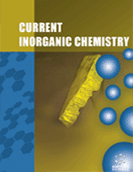Abstract
The intense research activities devoted to nanoscience and nanotechnology led to the development of multifunctional nanoparticles for biomedical applications and nanomedicine. By varying the size, the shape and the chemical composition, the properties of these objects can be accurately controlled. As a result, nanoparticles can be designed for combining several medical imaging techniques and therapy. Owing to their large range of properties, the lanthanides appear very attractive for the elaboration of multifunctional nanoparticles for biomedical applications. The nanoparticles behave as positive contrast agents for magnetic resonance imaging (MRI) when they contain gadolinium (III) and as negative contrast if dysprosium (III) is present in the nanoparticles. The doping of gadolinium based nanoparticles by luminescent lanthanides (Eu3+, Tb3+ …) led to fluorescent and paramagnetic nanoparticles that can be detected both by MRI and fluorescence imaging. The synthesis and the functionalization of crystalline nanoparticles containing gadolinium (III) and/or other lanthanides are therefore very important for nanomedicine. This review gives an overview of selected developments and applications of such multifunctional nanoparticles.
Keywords: Gadolinium, lanthanide, nanoparticles, magnetic resonance imaging, nanomedicine, Enhanced Permeability and Retention, PET/MRI instruments, therapeutic capabilities, luminescent properties, radiosensitization
 16
16

